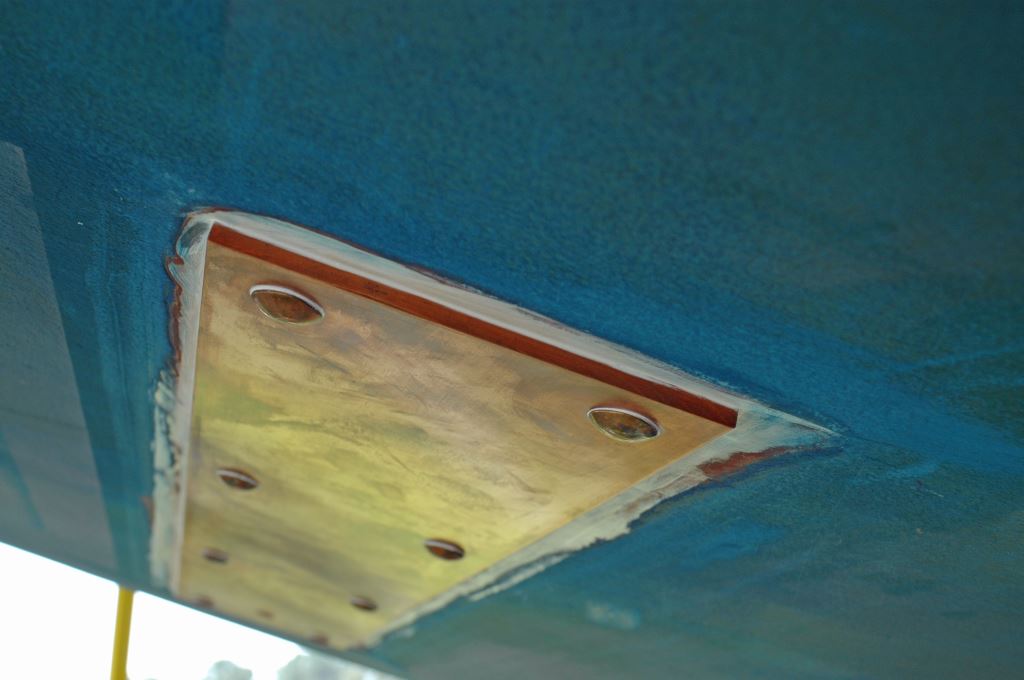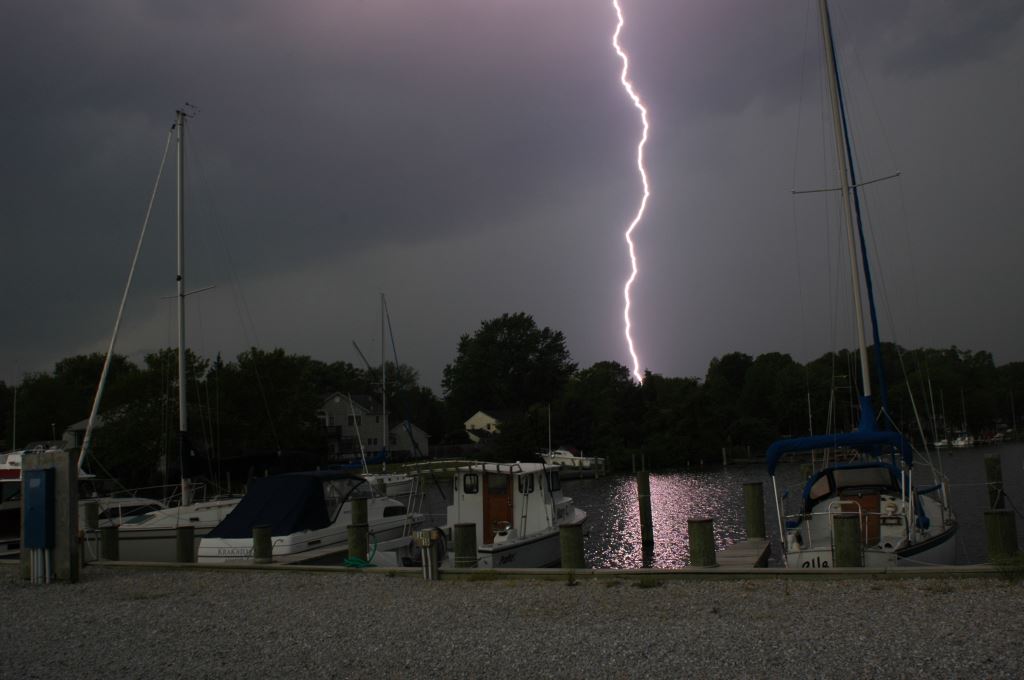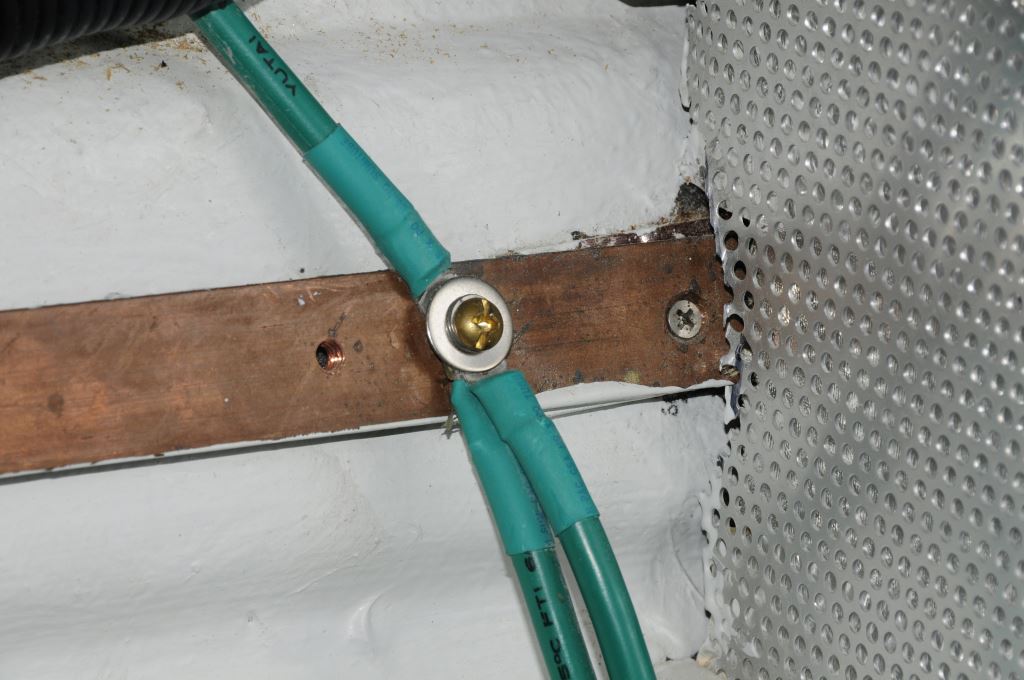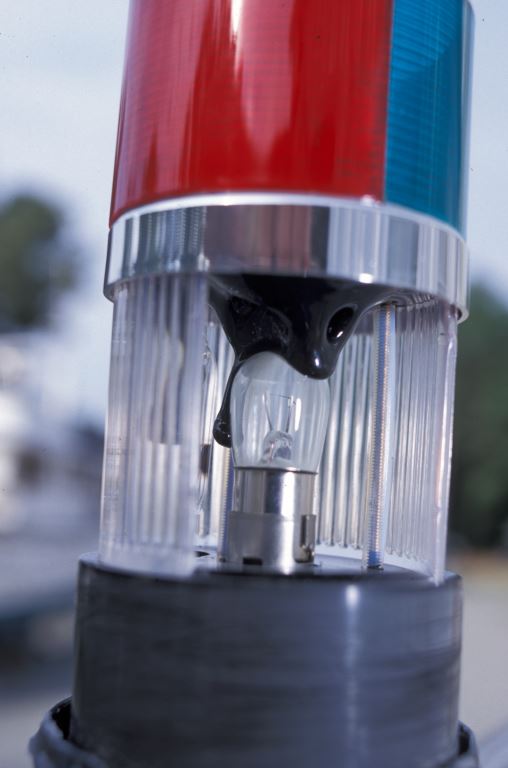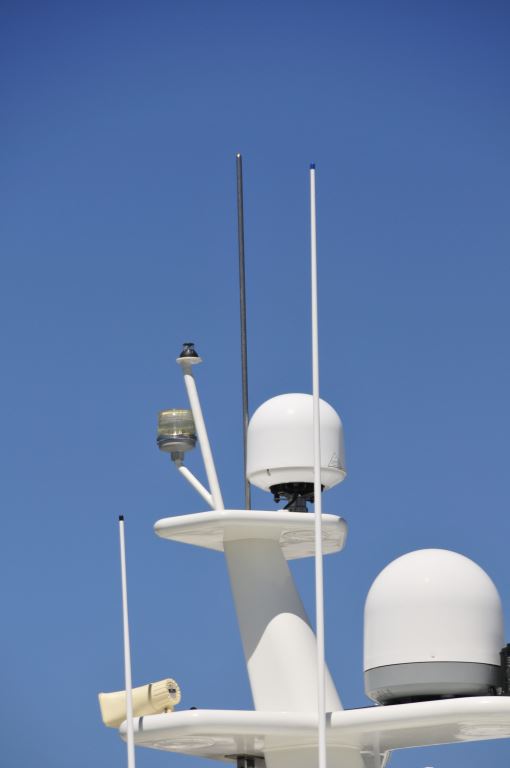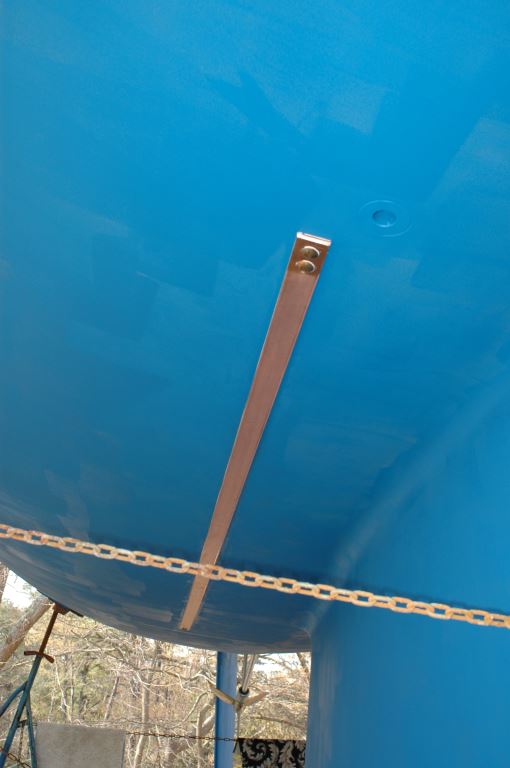From the Masthead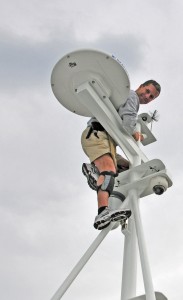
Knowing When to Self-Regulate
I’m writing this column while in flight, as I return from a week-long trip to Taiwan. While there I met with a client at the Tung Hwa yard to review construction on his soon to be completed Fleming 65, as well as touring Fleming’s production facility for their new 85 model. I was also able to tour the new South Coast Marine yard in Kaohsiung, which builds several Nordhavn models, and the Queen Long yard, where both Hylas power and sailing vessels are built. Thankfully, Taiwan no longer requires a quarantine upon arrival.
I’m a professional critic and in this column I regularly lament, and identify in detail, shortcomings in the world of boat building. However, in the 34 years that I have worked in this industry, I have witnessed enormous strides made in, among other things, the standards to which boats are built and repaired. I can recall when the first inverters were introduced, enabling owners of vessels without generators (yes, those were pretty common) to use modern conveniences like microwaves, TVs and hair dryers. Mattresses used to be little more than foam padding, today many vessels use high tech memory foam and even Sleep Number beds. Granite counter tops, electric blinds, hide-away screens, air conditioning that operates from a vessel’s battery bank, diesel heat, bidets, and acoustic insulation that now makes it hard to know if a vessel’s generator is running, have all become commonplace. Today, it is the exception for me to be involved with a new build project that isn’t being equipped with lithium-ion batteries. Quality and attention to detail too have improved with the wider adoption of boat building standards like those from ABYC, NMMA, CE and others. The bar has certainly been raised, and boat builders have for the most part necessarily upped their game to meet their customers’ needs, as well as keeping up with the competition, all of which is good for the boat buyer and owner.
You can, however, have too much of a good thing. I’m finding that some builders are so good at fulfilling the requests of their customers that the expectation level of the latter can become unrealistic. Better builders, those that are the most capable, are the most susceptible to this scenario. In one case that I moderated; an owner complained that the perforated metallic insulation material in the engine room was not a consistent shade of white. The inconsistency was so subtle it could not be noticed without supplemental lighting, and it could not be photographed, even with my professional DSLR. While I strive for near-perfection, and I’m an advocate for vessel owners and buyers, I explained to the owner in this case that there is a point at which a builder is entitled to say ‘no’. The adage, “the customer is always right” holds true in retail, but not necessarily in boat building. In this case the vessel buyer realized he was asking for too much.
Having said all this, it’s a fine line, builders and dealers must be responsive to reasonable requests, and they should be prepared to go above and beyond; doing so is good for business. I caution buyers, however, going to the well often is fine, but don’t draw from the well too deeply, lest it sour the relationship; it’s important to know when to self-regulate.
This month’s Marine Systems Excellence feature covers the subject of lightning protection. I hope you find it both useful and interesting.
Lightning
Toeing the Standards Line
Lightning is a constant summertime threat in many parts of the world, and especially the Chesapeake Bay. (Photo Ralph Naranjo)
Living and working on the Chesapeake Bay for the past two decades I’ve learned many things about lightning, the most important of which is this; be skeptical of anyone who says they can predict what it will do. Lightning in this region is incredibly intense; and only second to Florida for the number of boat strikes. Running a boat yard in the region for eleven years, repairing scores of vessels that had been struck, and sunk in some cases, afforded me a valuable learning opportunity where lightning and its effects are concerned. I’ve worked with cases of vessels being struck ashore and afloat, dockside, at anchor, on a mooring and underway. In one case, a vessel that had been repaired after a strike was struck yet again before it could be retrieved by its owner.
While I won’t claim to know enough about lightning to prevent strikes (in spite of the claims of some equipment manufacturers, I do not believe they can be prevented), I can, however, share guidance based on my first hand, purely anecdotal experiences and understanding of the American Boat & Yacht Council’s chapter TE-4, “Lightning Protection”, which may enable you to install a system that will prevent (damage, not the strike itself) or at least reduce the degree of lightning-induced damage. This is purely an interpretation of TE-4, rather than a discussion of alternative or supplementary methods of damage mitigation, of which there are several.
While not immune from damage, a well-bonded vessel is more resistant to the effects of a nearby or direct strike.
My first assertion is vessels equipped with bonding systems, even those that are partial, in poor repair or otherwise don’t meet ABYC standards, and relatively good grounding, i.e. contact between exposed metal and seawater, are less likely to suffer damage than those equipped with no bonding system. Of course, a sound bonding system is even better, and one that meets TE-4 better still, read on for details.
The primary goal of the TE-4 is to afford those aboard the vessel some level of safety and protection from electrocution and side flashes, arcs that can travel aboard and within the vessel. Secondarily, a sound grounding system may also serve to prevent damage to gear, electronics etc. Additionally, there is no proof that a well-grounded vessel is more likely to be struck by lightning, i.e., lightning rods do not “attract” lightning; however, I believe there is ample proof that vessels that lack adequate grounding are, once again, more likely to suffer damage (and their crews thereby more likely to be injured).
Three real-world examples, with which I was involved, bear out this assertion, and these are, again, purely anecdotal rather than scientific. The first, a 40-foot sailing vessel is struck by lightning while dockside and unattended, it is relatively new and is equipped with non-metallic seacocks, an external ballast keel, and standard bonding system, one that for the most part meets ABYC E-2 and E-11, but not TE-4. The VHF whip at the masthead apparently takes the brunt of the hit, it melts and stainless steel slag lands in the cockpit, burning gelcoat and the dodger. The VHF radio still works, as does all of the remaining gear aboard the vessel save a handful of blown out light bulbs and small fuses.
A mast head tricolor light damaged by a lightning strike.
The second case involves a 36 foot trimaran, roughly ten years old, with no bonding system, all through hull fittings are non-metallic, including the transducers. The owner of the vessel called to report that his boat has sunk at his dock. A salvage crew raises the vessel and transports it to the boat yard, where I examine it. I note that the remains of one of the transducers is hanging from its wire, which passes through its original mounting hole, the transducer itself is shattered, and there is damage to the outboard side of the starboard ama, below the waterline, which is balsa cored; although it’s not breached. Electrical systems aboard the boat, once dried out, show signs of damage, arcing and overheating. The conclusion is the vessel was struck by lightning, which exited the transducer and hull, causing it to flood and sink.
This vessel suffered structural hull damage at the waterline, the result of a lightning strike.
A 40-foot catamaran is dockside, this time in South Florida. No one is aboard; however, the owner of a neighboring vessel notes that one of the cat’s engines is running, and he knows it is not occupied. He calls the owner, who authorizes him to go aboard and turn it off. As soon as he goes aboard, he can smell smoke, upon opening the cabin he sees the deck above one of the engines smoldering, he opens it, the engine is running and the wiring and timber adjacent to the engine, is burning. He extinguishes the flames and is only able to turn off the engine by shutting the fuel supply, none of the controls work. The wiring harness is heavily damaged and melted. The vessel is not bonded, through hulls are non-metallic.
All three of these vessels survived their encounters with varying degrees of success, all were repaired. Statistically, catamarans are more likely to be struck than any other hull type.
Hardware
While compliant bonding and AC/DC ground systems can be beneficial in reducing the damaged caused by nearby or in some cases direct lightning strikes, a system that complies with, or more closely complies with TE-4 is preferred. I’ll be the first to admit that full compliance with TE-4 can be difficult if not impossible, particularly the part about the “temporary mast”. However, many vessels could be made to comply with the bulk of the standard. While I’m unable to review every component in the system in this column, I will touch on those that are of the greatest importance, or most often misunderstood.
The air terminal, or “lightning rod” in lubber’s argot, is “…a device at the uppermost point of the lightning protection system that attaches a lightning stroke to the lightning ground system”, the emphasis is mine. It’s designed to bridge the gap between a lightning bolt and the vessel. Air terminals should be made from solid 3/8” copper, or ½” aluminum rod (the latter are better suited to aluminum spars), the top of which should be domed, and 6 feet above the masthead or other un-grounded or non-conductive (essentially everything) structures.
The air terminal should be well above all other structures, and it must be connected to the ground plate by a heavy gauge conductor.
The ground terminal, essentially the other end of the system, is the connection between the vessel’s lightning protection system and the sea. These must be metal; they can be made from copper, copper alloy, aluminum, stainless steel, or lead, with a minimum thickness of 3/16” and 1 square foot of surface area. Existing underwater appendages can fill this requirement, particularly an exposed ballast keel, shafts, struts, and rudders, provided they are nearly directly under the down conductor (more on that in a moment). In most cases that excludes everything but a keel; however, these other submerged objects may be electrically tied to the ground terminal, augmenting its effectiveness.
ABYC Standards call for a minimum of one square foot of metal plate to be used as the ground terminal.
For stand-alone, dedicated ground terminals, for maximum dissipation effectiveness, TE-4 calls for the edges to be square, or sharp, rather than radiused and not filleted with caulk or fairing. Some studies indicate that the edge is what does the heavy lifting in strike dissipation, so the longer it is the better, making a rectangle more desirable than a square (the longer the better from the stand point of reducing side flashes within the vessel as well).
Because the edges do the dissipating, the longer the ground plate the better.
My preference is for a solid ¼” thick, 1 or 2” wide copper strip, a band of sorts, that runs parallel with the vessel’s centerline, amidships, or beneath the mast, that totals a minimum of 1 sq. ft. of surface area. Through bolts connect this to the hull, and serve as connection points for the primary conductor from the air terminal, as well as for secondary conductors from other bonded gear and underwater metals. For instructions on making and installing a ground terminal, see this column.
Wiring
The primary conductor, which runs from the air terminal (or the base of an aluminum or steel spar) to the grounding conductor, should be tinned stranded copper, and a minimum #4. It should be as straight and vertical as possible, bends, if necessary must not exceed 90°, and radii no less than 8”. Secondary conductors, which connect other fittings, chain plates, tanks, engine blocks, rails, pedestals outriggers etc, to the grounding conductor must be no less than #6 (there are some special considerations with engine blocks, for more on that see sidebar), and also as vertical as possible while avoiding sharp bends.
Lightning may be unpredictable; however, even a nearly compliant lightning protection system will almost certainly improve the odds of survivability for vessels operating in strike-prone areas.
Sidebar: Engine Block Grounding
The bonding standards for engine blocks can be a little confusing. If an engine, or any other electrical device with a metallic chassis or component for that matter, is non-current carrying; in the case of an engine that means it uses an isolated ground starter and alternator, then it can be bonded (bonding is an optional ABYC Standard), and that bonding cable is in addition to the DC negative cable. If present, the bonding wire must be capable of carrying full fault current, which it would be called upon to do if the largest positive cable, typically that which is used for the starter, shorted to the block (the bonding cable is allowed to be one size smaller than the aforementioned positive cable). Starter positive cables are exempt from over-current protection requirements, which means they may have no fuse, which in turn means a short is nearly always catastrophic. For more on over-current protection see this Marine Systems Excellence article. Many thrusters, by the way, also use non-current carrying housings, so they too are subject to bonding provision.
If, on the other hand, the engine block is a part of the current-carrying circuit for the starter and/or alternator, meaning it uses only a single positive cable for the starter and/or alternator, then it should not be bonded, as doing so would turn the bonding cable into a current carrier on a regular basis, something bonding wiring must never be called upon to do.

